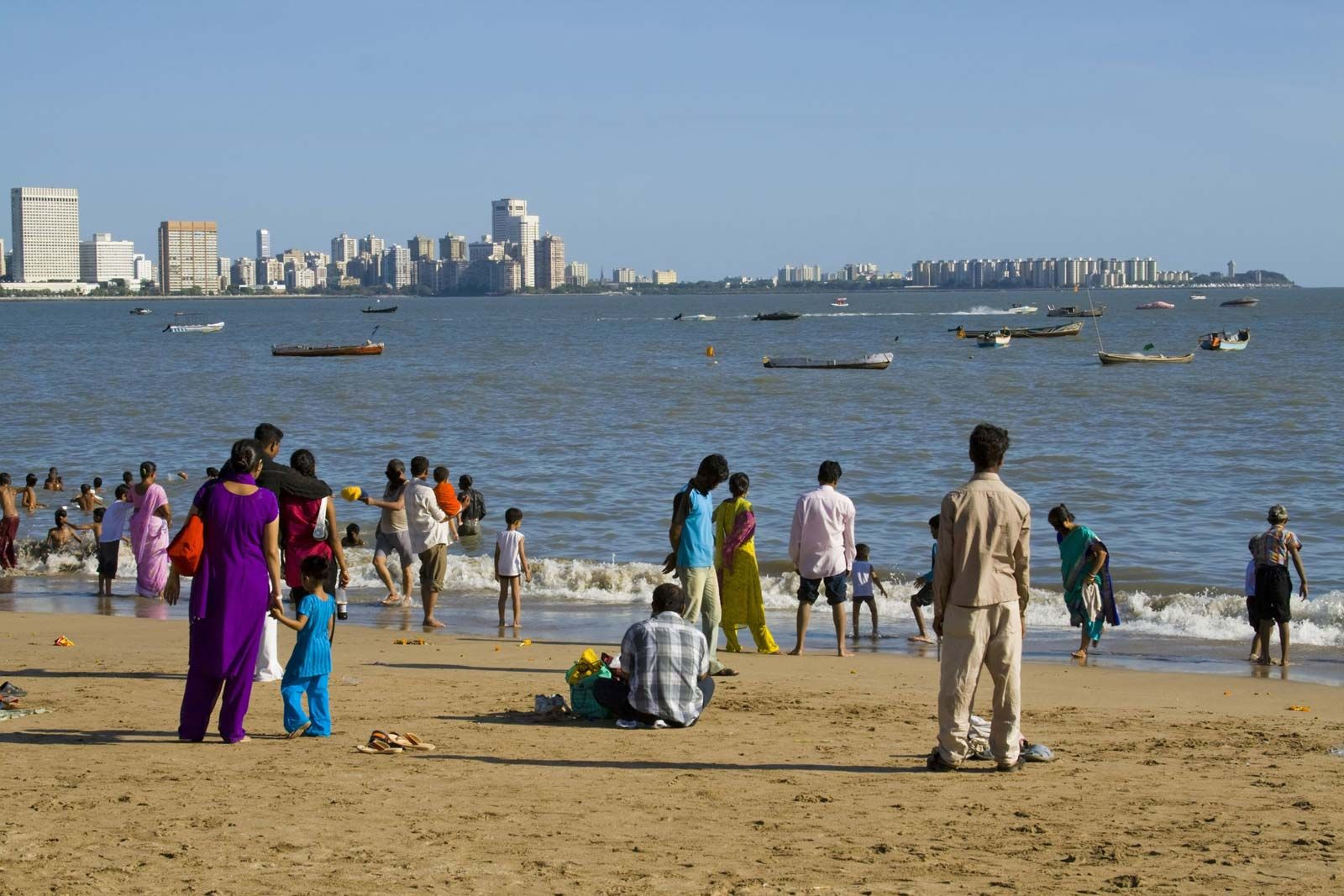Mumbai, often hailed as the “City of Dreams,” is a vibrant metropolis in India, but Where Is Mumbai exactly? This bustling urban center is strategically situated on the west coast of India, serving as the capital of the state of Maharashtra. Its unique geographical setting is defined by its peninsular location on Bombay Island, a landmass with a fascinating history of formation. Originally, this land was composed of seven distinct islets nestled off the Konkan coast, a coastal strip known for its scenic beauty along western India. Through centuries of ingenious engineering, including drainage, land reclamation, and the construction of causeways and breakwaters, these islets were gradually unified to create the Bombay Island we know today. This island is bordered to the east by the sheltered waters of Mumbai Harbor, a crucial port and a defining feature of the city’s geography.
 Aerial view of Mumbai metropolitan area showcasing its peninsular geography
Aerial view of Mumbai metropolitan area showcasing its peninsular geography
Bombay Island itself is characterized by a low-lying plain, with approximately a quarter of its area sitting below sea level, adding to the city’s unique coastal character. This plain is naturally framed by two parallel ridges of low hills that run along the east and west sides of the island. At the southernmost tip, Colaba Point, formed by the longer of these ridges, acts as a natural barrier, shielding Mumbai Harbor from the open expanse of the Arabian Sea.
 Panoramic view of Mumbai skyline from Girgaum Chowpatty showcasing Back Bay and the Arabian Sea
Panoramic view of Mumbai skyline from Girgaum Chowpatty showcasing Back Bay and the Arabian Sea
The western ridge culminates at Malabar Hill, a significant geographical landmark within Mumbai. Rising to 180 feet (55 meters) above sea level, Malabar Hill stands as one of the city’s highest points, offering commanding views of the surrounding landscape. Between Colaba Point and Malabar Hill lies Back Bay, a shallow bay that adds to the coastal topography. Moving inland from Back Bay towards the harbor, a slightly elevated strip of land marks the area known as the Fort. Historically, this area was the heart of 17th-century British fortifications, around which the city progressively expanded. Today, the Fort area is predominantly a commercial and administrative hub, bustling with offices and public institutions. Northward from Back Bay, the terrain transitions into the central plain of Mumbai, eventually leading to a large salt marsh in the city’s extreme northern reaches.
 View of Mumbai Harbour featuring the Gateway of India and the Taj Mahal Palace Hotel
View of Mumbai Harbour featuring the Gateway of India and the Taj Mahal Palace Hotel
Historically, the old city of Mumbai encompassed an area of about 26 square miles (67 square km), stretching from Colaba Point in the south to Mahim and Sion in the north. However, Mumbai’s geographical expanse dramatically increased in 1950 with its northward expansion to include the larger Salsette Island. Connected to Bombay Island by a causeway, Salsette Island further broadened Mumbai’s landscape. By 1957, Greater Mumbai was formed through the incorporation of suburban municipal boroughs and adjacent villages on Salsette, effectively creating the vast metropolitan region that surrounds Bombay Island and the city center. This expansion continues to shape modern-day Greater Mumbai.
 Entrance to the ancient cave temples on Elephanta Island in Mumbai Harbour
Entrance to the ancient cave temples on Elephanta Island in Mumbai Harbour
Mumbai’s natural beauty is a significant aspect of its location. Approaching Mumbai Harbour from the sea provides a breathtaking panorama, framed by the majestic Western Ghats mountain range on the mainland. The expansive harbor, dotted with islands and sailboats, offers safe haven for ships, especially during coastal storms. Elephanta Island, the largest island in the harbor, is renowned for its ancient Hindu cave temples dating back to the 8th and 9th centuries, adding a historical dimension to the city’s geographical appeal.
Mumbai experiences a warm and humid climate, characterized by four distinct seasons. Cool weather prevails from December to February, offering respite from the tropical heat. This is followed by hot weather from March to May as temperatures rise. The monsoon season, driven by southwest monsoon winds, dominates the weather from June to September, bringing significant rainfall. The post-monsoon season in October and November sees a return to hot conditions. Average monthly temperatures range from a high of 91 °F (33 °C) in May to a low of 67 °F (19 °C) in January. The city receives an average annual rainfall of about 70 inches (1,800 mm), with July alone accounting for an average of 24 inches (600 mm) of rain. This climate profoundly influences the city’s lifestyle and landscape.

